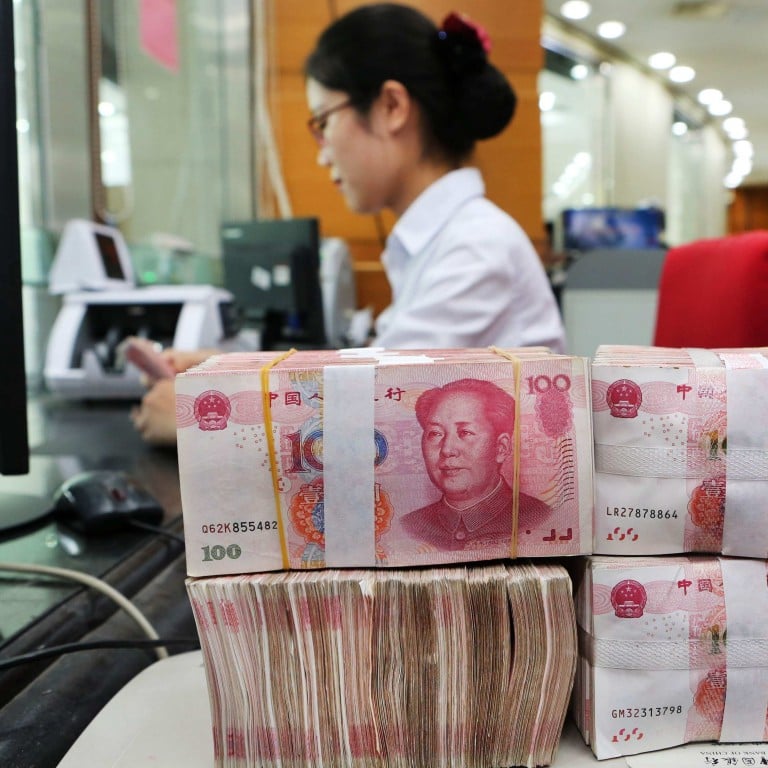
China cuts mortgage reference rate for first time in nearly 2 years, benchmark lending rate for second straight month
- China’s one-year loan prime rate (LPR) was cut from 3.80 per cent to 3.7 per cent, the People’s Bank of China (PBOC) said on Thursday
- The five-year LPR, which is the reference for mortgages, was also cut from 4.65 per cent to 4.6 per cent
China cut its benchmark lending rate for the second consecutive month on Thursday in the latest move to shore up the cooling economy, while also lowering a mortgage reference rate for the first time in nearly two years.
The five-year LPR – which is a reference rate for mortgages – was also cut from 4.65 per cent to 4.6 per cent for the first time since April 2020, according to the People’s Bank of China (PBOC).
[The] reductions to both the one-year and five-year loan prime rates continue the PBOC’s efforts to push down borrowing costs
“[The] reductions to both the one-year and five-year loan prime rates continue the PBOC’s efforts to push down borrowing costs. We expect additional easing measures to follow in the coming months, but policymakers still appear reluctant to engineer a sharp pickup in credit growth,” said Sheana Yue, China economist at Capital Economics.
The LPR has been considered China’s de facto benchmark funding cost since 2019. The rate is decided by a group of 18 banks and is reported in the form of a spread over the interest rate of the central bank’s medium-term lending facility (MLF).
It had remained unchanged for 20 months until December’s cut from 3.85 per cent to 3.8, having last been adjusted in April 2020 when the one-year LPR was cut from 4.05 per cent.
China’s indebted developers get a break from rate cuts and easing
The central bank sold 700 billion yuan (US$110 billion) worth of one-year medium-term lending facility at 2.85 per cent on Monday, compared with the previous rate of 2.95 per cent.
The seven-day reverse repurchase rate, a major liquidity-injection tool, was also lowered to 2.1 per cent from 2.2 per cent.
All 43 participants in a snap Reuters poll had predicted a cut to the one-year LPR for a second straight month at its January fixing. Among them, 38 people had expected a 10-basis-point cut, while the remaining five had projected a marginal reduction of five basis points.
Forty respondents had also forecast a reduction to the five-year LPR rate. This included 27 contributors predicting a 10-basis-point cut to the five-year tenor.
“[The] cut will immediately feed through to outstanding floating rate business loans and should also lead to cheaper loans for new fixed-rate borrowers. Mortgages will now be slightly cheaper, which should help shore up housing demand,” Yue added.
“The PBOC has already pushed banks to increase the volume of mortgage lending. Targeted support for property buyers does appear to be limiting one of the more severe downside risks facing the economy.”
Domestic expansion, infrastructure key to China’s growth as Omicron spreads
Beijing has been trying to keep a lid on surging home prices and debt levels in recent years, but more developers are defaulting and many construction projects have been delayed.
With the property downturn seen persisting through the first half of this year, and with sporadic coronavirus outbreaks dampening consumer activity, many analysts expect more easing measures soon.
“The demand for a good start, after China’s top leadership acknowledged the increasing downside risks in December, warrants policy front-loading,” Tommy Xie, head of Greater China research at OCBC Bank, said this week.
“In addition, we think there is also room for China to cut the MLF rate further by another 10 basis points,” he said.
Additional reporting by Reuters

.JPG?itok=J8tgfPmW&v=1659948715)